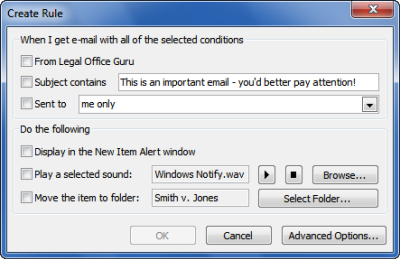고정 헤더 영역
상세 컨텐츠
본문

Tip: If you receive messages from a contact group (also known as a distribution list), you can create a rule that automatically moves messages that are sent to the group into a folder. In the message list, click a message with the sender or recipient that you want to create a rule for. On the Home tab, click Rules, and then click Move Messages from (sender's name) or Move Messages to (recipient's name). In the folder search box, start typing the name of the folder that you want to move messages to.
Jun 20, 2018 - Outlook on Mac will either export everything - all account/folder. Outlook 2011 - check the Outlook for Mac (olm) data file option, then. Got an idea for how to improve Outlook? Share it with us. Or vote on other people's ideas. Come join the discussion. Outlook for Mac. If you have Office 2016 for Mac installed on your computer. Rule Move all messages in the Inbox folder and all future messages 'when creating a rule.
When the folder you want appears, click the folder name, click Choose, and then click OK. Notes:. If you have a Microsoft Exchange account managed by Microsoft Exchange Server 2010 or later, the rule is automatically saved on the Exchange server. For more information, go to. If you create multiple rules, Outlook runs the rules in the order in which they are listed in the Rules window.
Before it runs rules on messages, Outlook first applies the Mailing List Manager rules and then the junk e-mail protection rules. Regular rules are applied last. However, they are applied to messages even if they are in the Junk category. For more information about Mailing List Manager rules, see.
When you create a rule from an existing message, the sender, recipient, and subject are automatically pre-populated in the rules instructions. In the message list, click the message from which you want to create a rule. On the Home tab, click Rules, and then click Create Rule. Under When a new message arrives, edit the criteria to suit your needs. To remove one of the criteria, click. To add additional criteria, click. Under Do the following, specify the actions that you want to be performed.
Notes:. If you have a Microsoft Exchange account managed by Microsoft Exchange Server 2010 or later, the rule is automatically saved on the Exchange server.

For more information, go to. If you create multiple rules, Outlook runs the rules in the order in which they are listed in the Rules window.
Outlook On A Mac

Before it runs rules on messages, Outlook first applies the Mailing List Manager rules and then the junk e-mail protection rules. Regular rules are applied last. However, they are applied to messages even if they are in the Junk category. For more information about Mailing List Manager rules, see. Instead of creating a rule from an existing message, you can create a custom rule based on any criteria you want.
Creating a custom rule is necessary if you have an account managed by Microsoft Exchange Server 2010 or later and you want to save the rule on your computer. (If you create the rule based on an existing message, rules for an account managed by Microsoft Exchange Server 2010 or later are saved on the Exchange server, not on your computer.) If you don't know whether your account is managed by Exchange, go to. On the Tools menu, click Rules.
In the left pane of the Rules dialog box, do one of the following:. To create a rule that runs on your computer while Outlook is open, under ON MY COMPUTER, click the account type. To create a rule that runs on the Exchange server, under EXCHANGE SERVERS, click the account name.
(This option is only available for accounts management by Microsoft Exchange Server 2010 or later.). Click Add. In the Rule name box, type a name for the rule.
Under When a new message arrives, on the leftmost pop-up menu, click the type of information that you want to identify. For most criteria, you move from left to right to use more pop-up menus or text boxes. For example, to identify all messages sent from coworkers, the criterion could be ' From' ' Contains' ' @alpineskihouse.com.'
If you want to have multiple criteria separated by 'or,' for rules saved on the Exchange Server, do this:. In the left-most pop-up menu of the criteria, select a field that contains text, such as From, Recipients, or Subject. Moving to the right, in the second pop-up menu, select Contains. Click Add search terms, and then in the search list, click Add for each term that you want to add. For rules saved on your computer, you can use the pop-up menu above the criteria to select If Any Criteria Are Met or other options.
To remove one of the criteria, click. To add additional criteria, click. Under Do the following, specify the actions that you want to be performed.
How To Create A Rule In Outlook
Notes:. With a Microsoft Exchange account managed by Microsoft Exchange Server 2007, you cannot use Outlook for Mac to edit or create rules that are saved on the Exchange server (such as rules you created in Outlook for Windows). Rules that you create in Outlook for Mac are saved on your computer and run on messages only as they are synchronized with Outlook for Mac. For more information, go to. If you create multiple rules, Outlook runs the rules in the order in which they are listed in the Rules window. Before it runs rules on messages, Outlook first applies the Mailing List Manager rules and then the junk e-mail protection rules. Regular rules are applied last.
Check Rules In Outlook For Mac Download
However, they are applied to messages even if they are in the Junk category. For more information about Mailing List Manager rules, see.




